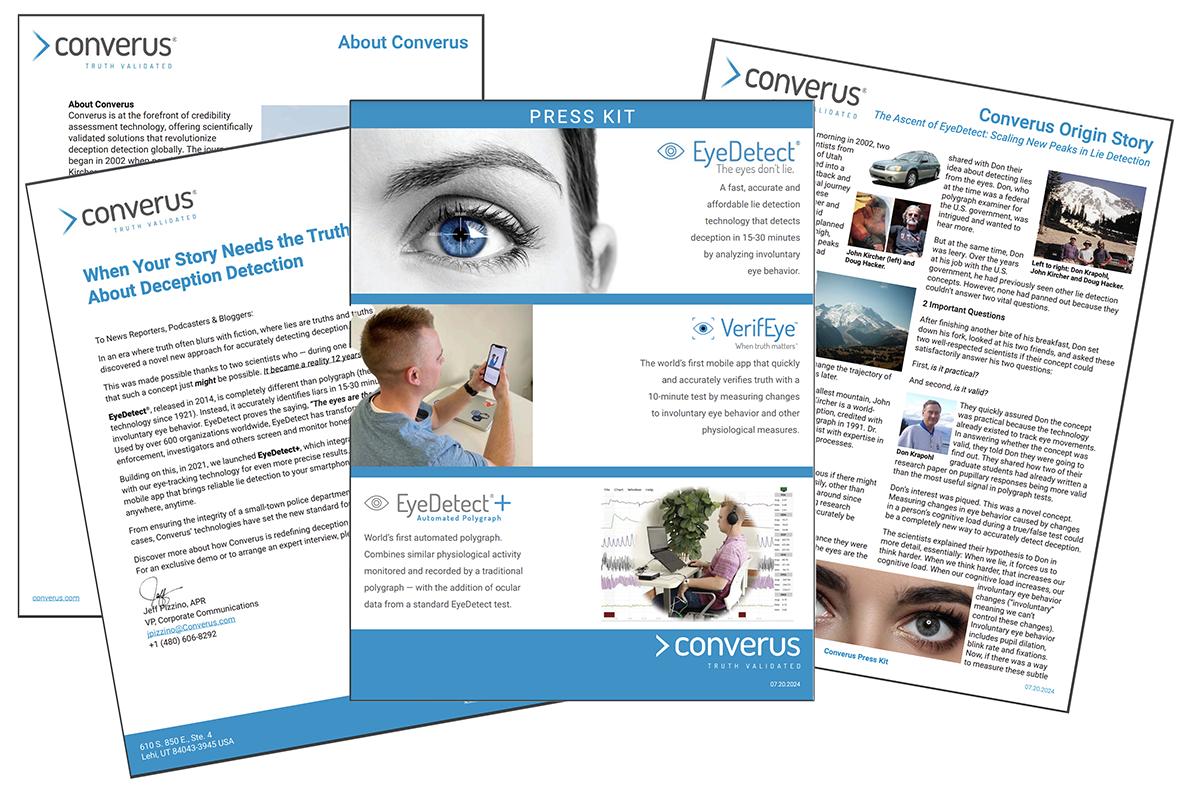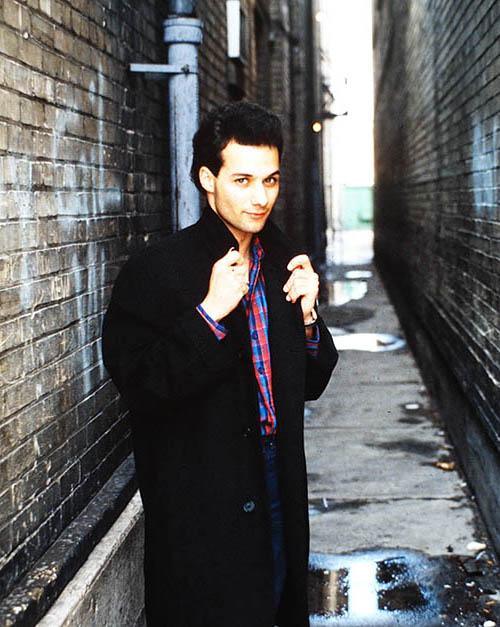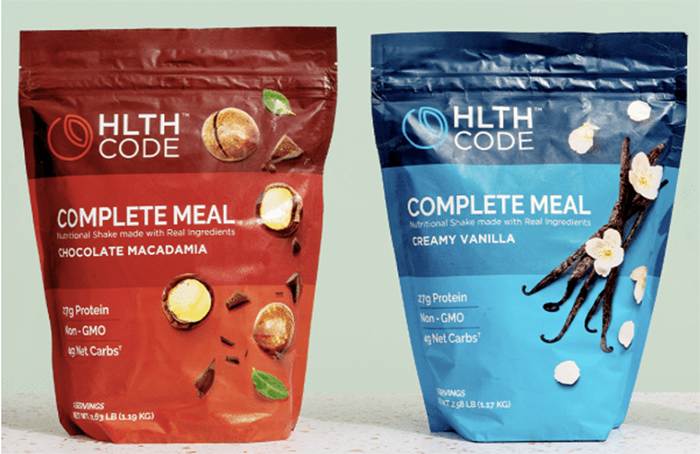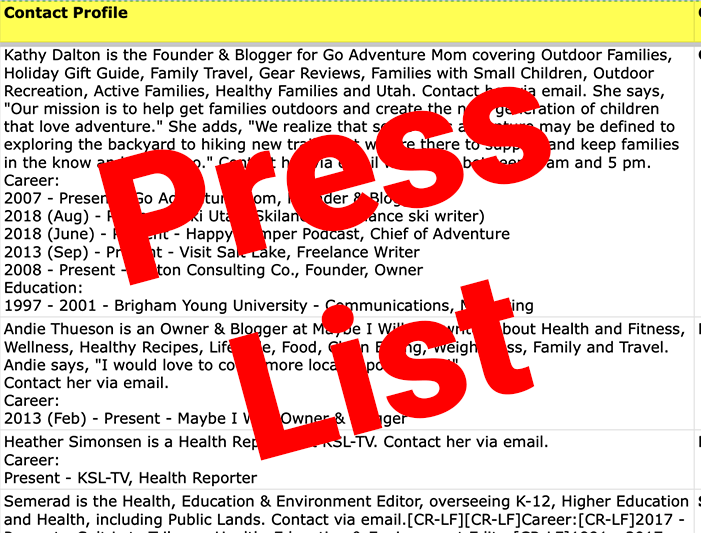
Ready to get creative?
It’s time for Press Relations Lesson #4, where we tackle press materials — what you need, how to format them, and how to make sure reporters actually use them.
As you’ve seen in previous weeks, these lessons are for those new to press relations. (To my PR pro subscribers, thanks for sticking around — I know you already know this stuff inside and out.)
Want the press to share your story? This 7-part press relations course lays out the steps. If it looks manageable, dive in! If it feels overwhelming, consider bringing in a PR pro.
Press Relations Roadmap
Let’s recap where we’ve been and where we’re headed:
✔️ Intro to press relations (01.17.2025)
✔️ Selecting news outlets and contacts (01.24.2025)
✔️ Organizing your press list (01.31.2025)
🔥 THIS WEEK: Preparing your press materials
🔜 Working your press list
🔜 Preparing for the interview
🔜 Leveraging your press coverage
Meet the Press Kit
Everything you prepare for the media falls under one term: press kit.
And every piece of it should be press-friendly — which includes writing in Associated Press (AP) style.
Back in 1987, when I started at Ketchum Public Relations in midtown Manhattan fresh out of BYU, press kits were strictly physical folders filled with printed materials.
Now, most press kits are digital, available for download as a PDF or broken into individual files.
Here’s an example of an online press kit I created for a client.
What’s in Your Press Kit?
(Hey, that sounds like a line from an ad!)
Let’s break down what you should (or may) include:
📌 Welcome Letter – Your opening statement. It should hook the reporter and make them want to read on. It’s like a follow-up to your pitch letter (which will be discussed in the next lesson).
📌 Press Release – Think newsworthy, AP style, with relevant quotes and a strong lead. There should be a headline that clearly articulates the news, a summary paragraph, a dateline, body copy, and an “About Us” paragraph at the end (also referred to as the “company boilerplate”). It would be easy to take an entire newsletter and only discuss how to write a press release. The main advice is think like a reporter, get the who-what-where-when and sometimes how in your lead, keep it factual, have attribution for any claims, and include your contact information. No puffery or marketing-speak allowed! There are more details I could share about constructing a press release, but those are the main elements.
📌 Media Alert – If you’re hosting an event, this either replaces or supplements your press release.
📌 Fact Sheet – Bullet points summarizing your company, product or service.
📌 FAQ – Help reporters by anticipating their questions. One great question to answer is, “Who are the competitors?” Yes, mention your competitors. Otherwise, the reporter has to do the research. Be as press-friendly as possible.
📌 Source Expert Bio – Who’s your spokesperson? Why should the press trust them?
📌 Company History or Origin/Founder’s Story – Provide relevant milestones or an engaging story on how you came to be.
📌 Case Studies/Testimonials – Show proof that your product or service works and share the validation of others.
📌 Brochures and/or Flyers – Optional, but can be helpful for additional context.
📌 Downloadable Media Assets – High-res images (300 dpi, minimum 4×6”), videos, and even audio clips if relevant.
You won’t need every single one of these. Include only what strengthens your news hook and helps the press tell your story.
Lastly, all the press kit items should have a clean, uncluttered layout. It should look professionally designed.
Where Does Your Press Kit Live?
Ideally, your website should have a dedicated area specifically for the press.
Not sure what to call it?
✔️ “Press Room” or “Newsroom” – Clear and effective.
✔️ “Press” – If you want something even briefer.
✔️ “Media” – A bit vague but still works.
The most critical thing to include? Your press contact.
If you’re a small company, this may be you as the owner. Otherwise, it should be your PR person — not necessarily your head of marketing (unless they understand PR strategy).
If you outsource PR (like my clients do), list your PR pro. I’m the official press contact in several of my clients’ newsrooms.
What’s in Your Online Newsroom?
✅ Press Kit – Easy to find and download.
✅ Press Releases – Organized chronologically, starting with the most recent.
✅ Previous Coverage – Links to online articles, TV segments, podcasts, etc.
✅ Downloadable Media Assets – High-quality images, logos and videos.
✅ Contact Form – A form for inquiries plus a direct phone number for urgent deadlines. It should ask for the reporter’s name, news outlet, email, phone, deadline, and room for an optional message.
A well-organized press room makes it easy for journalists to cover your story — and easier for you to get more media attention.
Just like I could give a ton more advice on writing a press release, I could easily take an entire blog post to discuss how to create a stellar Newsroom on your website.
The 3 Big Takeaways
🔹 Think like a journalist – Make it easy for the press to cover your story.
🔹 Keep it newsworthy – Your press kit should support your news hook(s).
🔹 Look professional – Press kit design matters. Clean and polished wins.
Next up: Working your press list — because having a press kit is great, but it’s useless if you don’t put it in the right hands.
Got questions about PR, marketing communications, entrepreneurship — or maybe even my Sicilian nonna’s best cookie recipe? Hit me up.
Stay authentic… and press worthy!

Jeffery E. Pizzino, APR is a spin-free public relations pro who is passionate about telling the why of your story with clarity, impact and authenticity. He began his PR career in 1987 at Ketchum Public Relations in New York City but has spent the majority of his career as a solopreneur. He’s AuthenticityPR’s Chief Authentic Officer and also functions as the fractional CCO for technology startup Converus.
Jeff has an MBA in Management from Western International University and a Bachelor of Arts degree in Communications — with an emphasis in PR — from Brigham Young University. He’s a native of Milwaukee, Wisconsin, but also holds an Italian citizenship. Jeff and his storyteller wife Leticia have four children and four grandchildren. In his extremely limited nonwork hours, he studies italiano, practices guitar, write songs, gardens, disc golfs, reads, listens to New Wave music, serves in his church, watches BYU football, and plays Dominion and Seven Wonders. Email Jeff.

